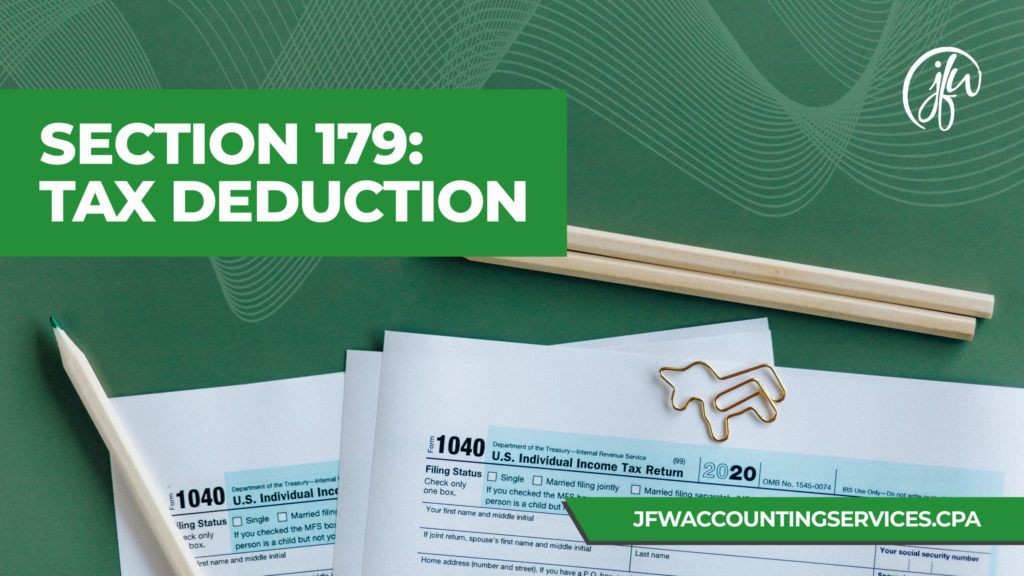Nonprofits are often tax-exempt. That means they do not pay any income taxes on earned income. However, profits generated from the income of a nonprofit organization must be put back into the purpose of the business. Many people do not think IRS regulations, like Section 179, apply to nonprofits. That is not correct. Read on to learn about Section 179 and how leveraging the deductions can help your nonprofit.
What Is Section 179 And What Is Its Purpose?
The Internal Revenue Code 179 allows a nonprofit to expense the cost of certain property and equipment instead of capitalizing and depreciating it. Generally, when equipment, like printers or copiers, are purchased, the cost must be depreciated over the useful life of the asset. However, when using Section 179, the nonprofit can expense the entire cost of the item in the year that it is purchased.
2021 179 Tax Deduction Updates
In 2021, the maximum deduction allowed is $1,050,000. This maximum deduction increased from the prior year when it was $1,040,000 in 2020. 2021 also brought a new cap for Section 179 purchases. This means that the new spending cap is $2,620,000. Changes this year also specified that if the total purchase price reaches $3,670,000, there is no deduction allowed.
How Does It Work?
Writing off the entire cost of large equipment in the year it is purchased has a lot of benefits, like reducing income. However, it is not always the best choice for nonprofit tax savings. You do not have to expense the entire cost of the asset right away, but you can choose to depreciate the value over the useful life of the item. A nonprofit should work with its accountant and look at the year-end numbers to decide if section 179 would benefit them. It makes the most sense for a nonprofit to use Section 179 in a year that they need to offset a larger income.
Section 179 Limitations
There is a spending cap for qualifying purchases using Section 179. You can expense a large purchase only up to the cap, which is $2,620,000. Once the cap is reached, the deduction gets reduced on a dollar-for-dollar basis. So if a nonprofit organization spend $2,670,000, $50,000 over the cap, on qualifying purchases, their deduction would drop to $1,000,000 from $1,050,000.
Qualifications
Purchases that qualify for the Section 179 deduction must be tangible and depreciable personal property that is bought for the purpose of doing business. There are regulations on the qualifying property’s use, though. A purchase that qualifies for this tax benefit must use the purchased equipment for the benefit of the nonprofit at least 50% of the time. If the equipment is used for personal use 30% of the time, you can only take a deduction on the percentage of the cost that is used for business (70% in this example).
Eligible Deductions
Section 179 applies to the purchase of both new and used equipment. The benefit only requires that the purchased asset be put into use during the year the deduction is taken. Some examples of purchases that would qualify for the Section 179 deduction include:
- Equipment
- Machinery
- Vehicles more than $6,000 lbs used for business
- Office furniture
- Security systems
- Building improvements, like a new roof or HVAC system
- Computers and computer software
Section 179 Example Calculation
Cost of equipment = $1,500,000
Maximum write off in year one = $1,050,000
Bonus depreciation (if 100% is used in the first year) = $100,000
Ordinary first year depreciation = $0
Total deduction in year one = $1,050,000 + 100,000 + 0 = $1,150,000
Tax savings (assuming a 21% tax rate) = 0.21 * $1,150,000 = $241,500
Purchase cost after tax savings using the section 179: $1,500,000 – $241,500 = $1,258,500
Final Thoughts
Using the Section 179 deduction for nonprofits can require balance. It is best to consult with a tax expert for direction on large purchases and how they impact your nonprofit organization’s bottom line. To get the most out of this IRS tax deduction and any other applicable benefits, schedule a call today and talk to our experts at JFW Accounting Services. Expert guidance is always recommended before filing year-end financial statements for a nonprofit.

Jo-Anne Williams Barnes, is a Certified Public Accountant (CPA) and Chartered Global Management Accountant (CGMA) holding a Master’s of Science in Accounting (MSA) and a Master’s in Business Administration (MBA). Additionally, she holds a Bachelor of Science (BS) in Accounting from the University of Baltimore and is a seasoned accounting professional with several years of experience in the field of managing financial records for non-profits, small, medium, and large businesses. Jo-Anne is a certified Sage Intacct Accounting and Implementation Specialist, a certified QuickBooks ProAdvisor, an AICPA Not-for-Profit Certificate II holder, and Standard for Excellence Licensed Consultant. Additionally, Jo-Anne is a member of American Institute of Certified Public Accountant (AICPA), Maryland Association of Certified Public Accountants (MACPA), and Greater Washington Society of Certified Public Accountants (GWSCPA) where she continues to keep abreast on the latest industry trends and changes.

